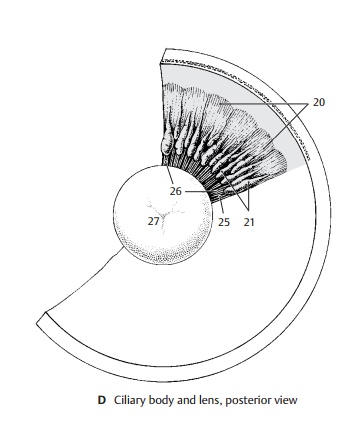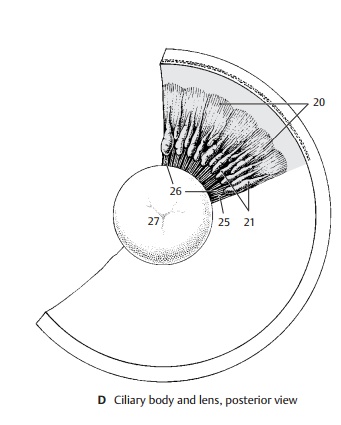Chapter: Human Nervous System and Sensory Organs : The Eye
Ciliary Body - Structure of the Eye

Ciliary Body
The lens is suspended at the circular ciliarybody (A19, D). The muscles of the ciliarybody control the curvature of the lens and, hence, the visual acuity for close and distant vision. It consists of a radially folded surface, the ciliary disk (D20), from where approximately 80 ciliaryprocesses (D21) protrude (ciliary crown). Theanterior part of the disk is occupied by the ciliary muscle; its muscle fibers, the merid-ional fibers (A22), span between the oraser-rata and the reticulum trabeculare as well as Descemet’s membrane. From here, radial muscle fibers extend inward and bend to take a circular course (circular fibers) (A23). The posterior surface of the ciliary body is covered by the ciliary part of the retina(A24). Delicate fibers, the zonular fibers (AD25), extend from the ciliary body to the lens and form the ciliary zone (D26). Many fibers originate from the area of the oraser-rata and extend to the anterior surface of the lens. They cross the shorter fibers aris-ing from the ciliary processes and ending at the posterior surface of the lens.


Related Topics